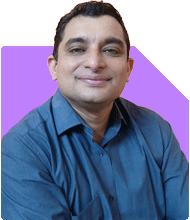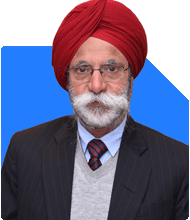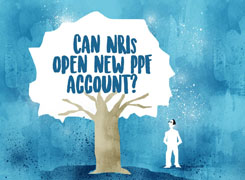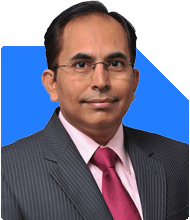Investing 1 Lakh for Child's Education? Expert Advice on Mutual Funds
Ramalingam Kalirajan |10902 Answers |Ask -Follow
Mutual Funds, Financial Planning Expert - Answered on Jul 23, 2024
He has an MBA in finance from the University of Madras and is a certified financial planner.
He is the director and chief financial planner at Holistic Investment, a Chennai-based firm that offers financial planning and wealth management advice.... more

Hi Experts, I have Rs 1 lac, which I want to put into any mutual fund for my new born kid, so that when he will attain age of 18+ he should have some amount (15-20 lac) which could assist him in higher education. Please suggest me any good lumpsum Mutual fund
Lumpsum Investment Strategy
Investing Rs 1 lakh in a mutual fund now can grow significantly over 18 years.
Choosing the Right Mutual Fund
Consider these types of mutual funds for long-term growth:
Equity Funds: These funds invest in stocks and offer high returns. They are suitable for long-term goals like education.
Hybrid Funds: These funds invest in both stocks and bonds. They balance risk and returns, making them a good option.
Debt Funds: These funds invest in bonds and are safer but with lower returns. They are less suitable for long-term high growth but can be part of a diversified portfolio.
Actively Managed Funds vs. Index Funds
Actively Managed Funds: These funds have a manager who picks stocks to outperform the market. They can offer higher returns.
Index Funds: These funds track a market index. While they have lower fees, they might not perform as well as actively managed funds.
Direct Funds vs. Regular Funds
Direct Funds: These funds are bought directly from the fund house, saving on commission fees. However, they require more effort to manage and choose the right fund.
Regular Funds: These funds are bought through a Mutual Fund Distributor (MFD) with a Certified Financial Planner (CFP) credential. They provide professional guidance and can help you make better choices.
Diversification
Diversifying your investment reduces risk.
Equity Funds: Allocate a major portion here for higher returns.
Hybrid Funds: Add some portion here for stability.
Risk and Returns
Equity funds are volatile but offer high returns.
Hybrid funds balance risk and returns.
Debt funds offer stability but lower returns.
Time Horizon
18 years is a long period, allowing your investment to grow significantly. Start early and stay invested for the best results.
Regular Monitoring
Review your investment regularly. Adjust based on performance and market conditions.
Professional Guidance
A Certified Financial Planner can provide personalized advice. They help you choose the right funds and manage your investment effectively.
Final Insights
Investing Rs 1 lakh now can help your child’s future.
Stay Invested: Long-term investment is key.
Diversify: Spread your investment across different types of funds.
Monitor: Regularly check your investment and adjust as needed.
Seek Guidance: A CFP can provide valuable advice and help you make the best decisions.
Best Regards,
K. Ramalingam, MBA, CFP
Chief Financial Planner
www.holisticinvestment.in
Best Regards,
K. Ramalingam, MBA, CFP,
Chief Financial Planner,
www.holisticinvestment.in
You may like to see similar questions and answers below
Omkeshwar Singh | Answer |Ask -Follow
Head, Rank MF - Answered on Jul 18, 2022
Ramalingam Kalirajan |10902 Answers |Ask -Follow
Mutual Funds, Financial Planning Expert - Answered on May 09, 2024
Ramalingam Kalirajan |10902 Answers |Ask -Follow
Mutual Funds, Financial Planning Expert - Answered on Jun 19, 2024
Ulhas Joshi |280 Answers |Ask -Follow
Mutual Fund Expert - Answered on Aug 13, 2024
Naveenn Kummar |236 Answers |Ask -Follow
Financial Planner, MF, Insurance Expert - Answered on Dec 18, 2025
Anu Krishna |1749 Answers |Ask -Follow
Relationships Expert, Mind Coach - Answered on Dec 17, 2025
Anu Krishna |1749 Answers |Ask -Follow
Relationships Expert, Mind Coach - Answered on Dec 17, 2025
Radheshyam Zanwar |6748 Answers |Ask -Follow
MHT-CET, IIT-JEE, NEET-UG Expert - Answered on Dec 17, 2025
Anu Krishna |1749 Answers |Ask -Follow
Relationships Expert, Mind Coach - Answered on Dec 17, 2025
Dr Shakeeb Ahmed Khan |184 Answers |Ask -Follow
Physiotherapist - Answered on Dec 17, 2025
T S Khurana |538 Answers |Ask -Follow
Tax Expert - Answered on Dec 17, 2025
T S Khurana |538 Answers |Ask -Follow
Tax Expert - Answered on Dec 17, 2025
Janak Patel |72 Answers |Ask -Follow
MF, PF Expert - Answered on Dec 17, 2025
Ramalingam Kalirajan |10902 Answers |Ask -Follow
Mutual Funds, Financial Planning Expert - Answered on Dec 17, 2025





























